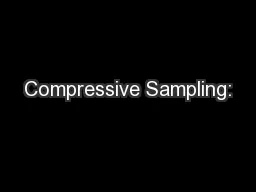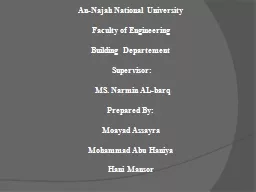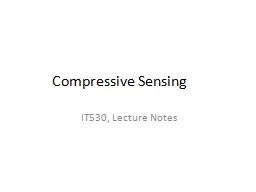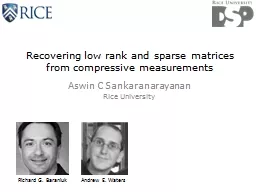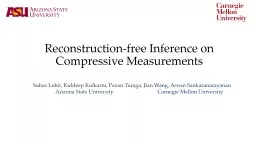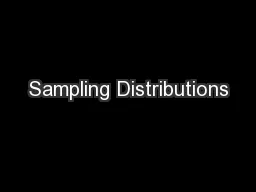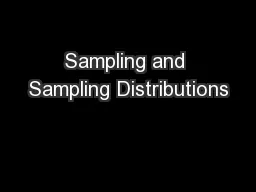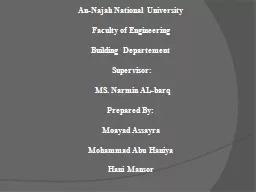PPT-Compressive Sampling:
Author : natalia-silvester | Published Date : 2016-04-19
A Brief Overview With slides contributed by WHChuang and Dr Avinash L Varna Ravi Garg Sampling Theorem Sampling record a signal in the form of samples Nyquist
Presentation Embed Code
Download Presentation
Download Presentation The PPT/PDF document "Compressive Sampling:" is the property of its rightful owner. Permission is granted to download and print the materials on this website for personal, non-commercial use only, and to display it on your personal computer provided you do not modify the materials and that you retain all copyright notices contained in the materials. By downloading content from our website, you accept the terms of this agreement.
Compressive Sampling:: Transcript
Download Rules Of Document
"Compressive Sampling:"The content belongs to its owner. You may download and print it for personal use, without modification, and keep all copyright notices. By downloading, you agree to these terms.
Related Documents

